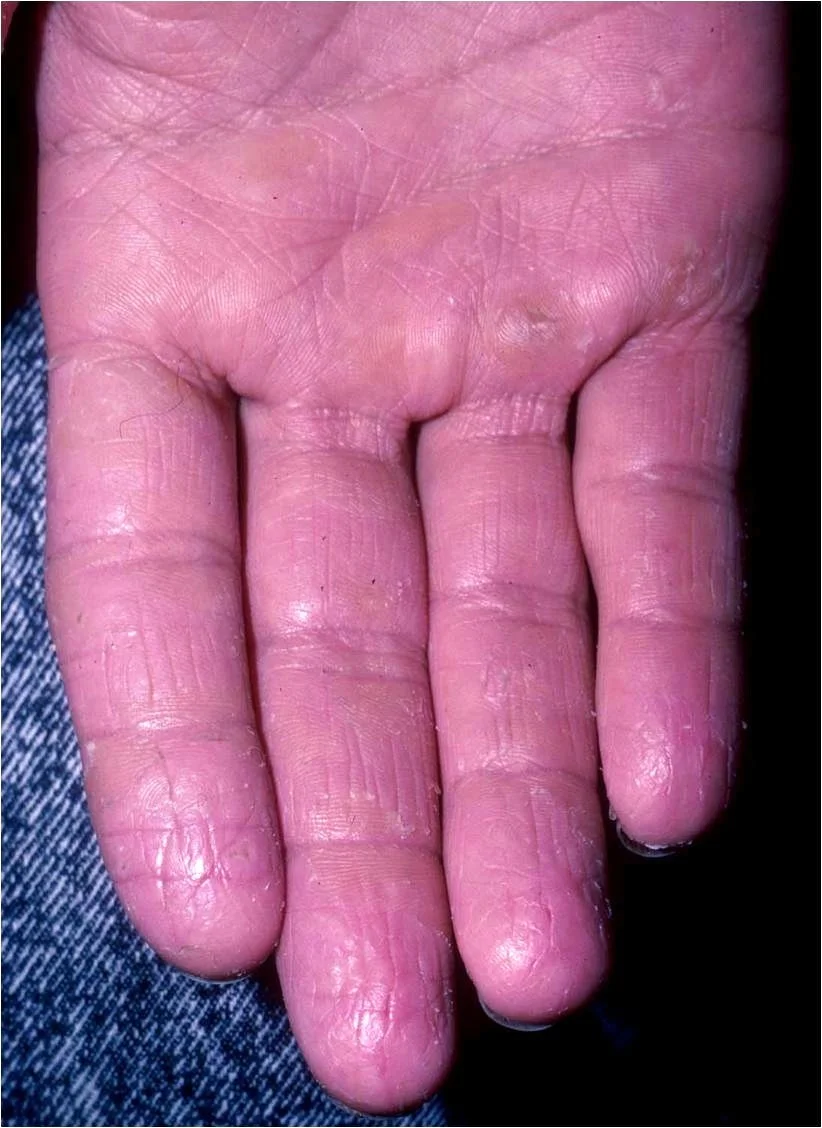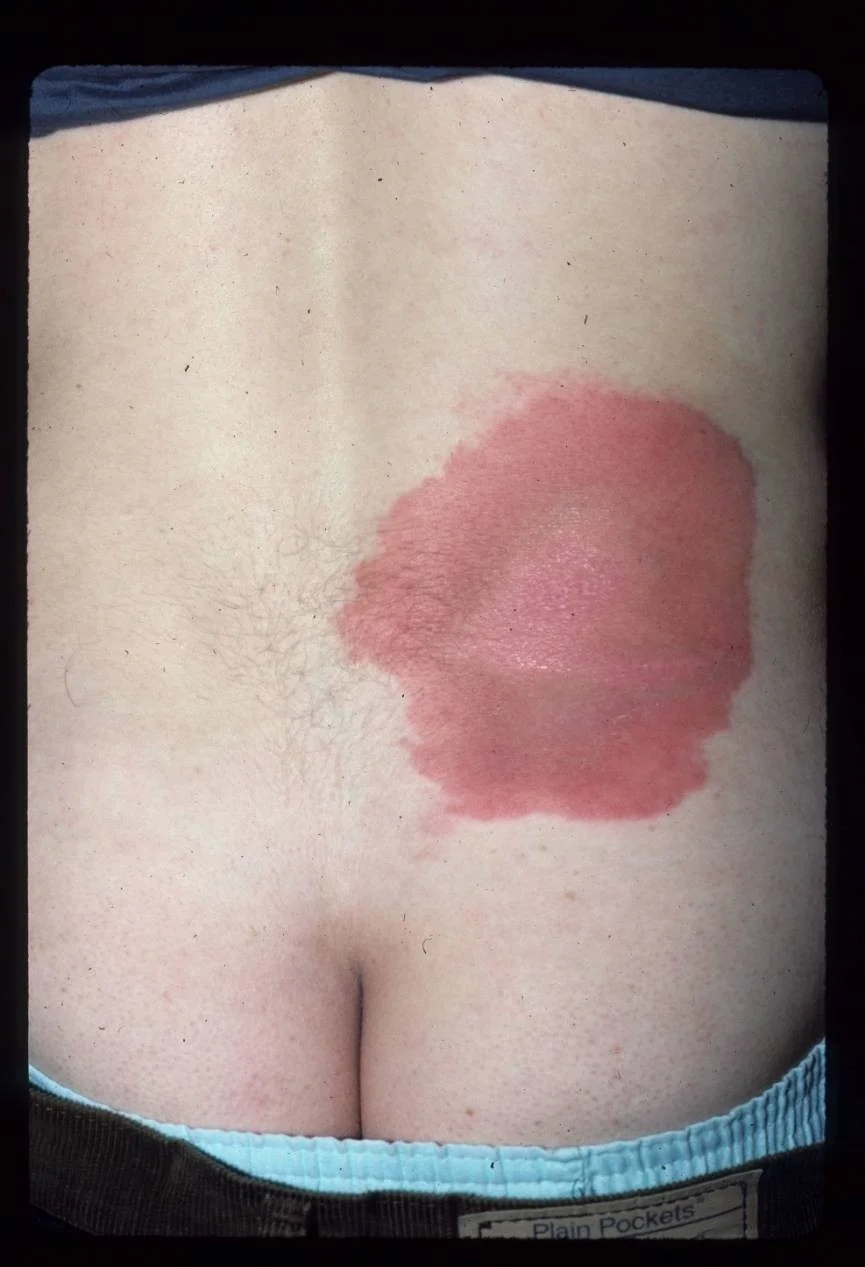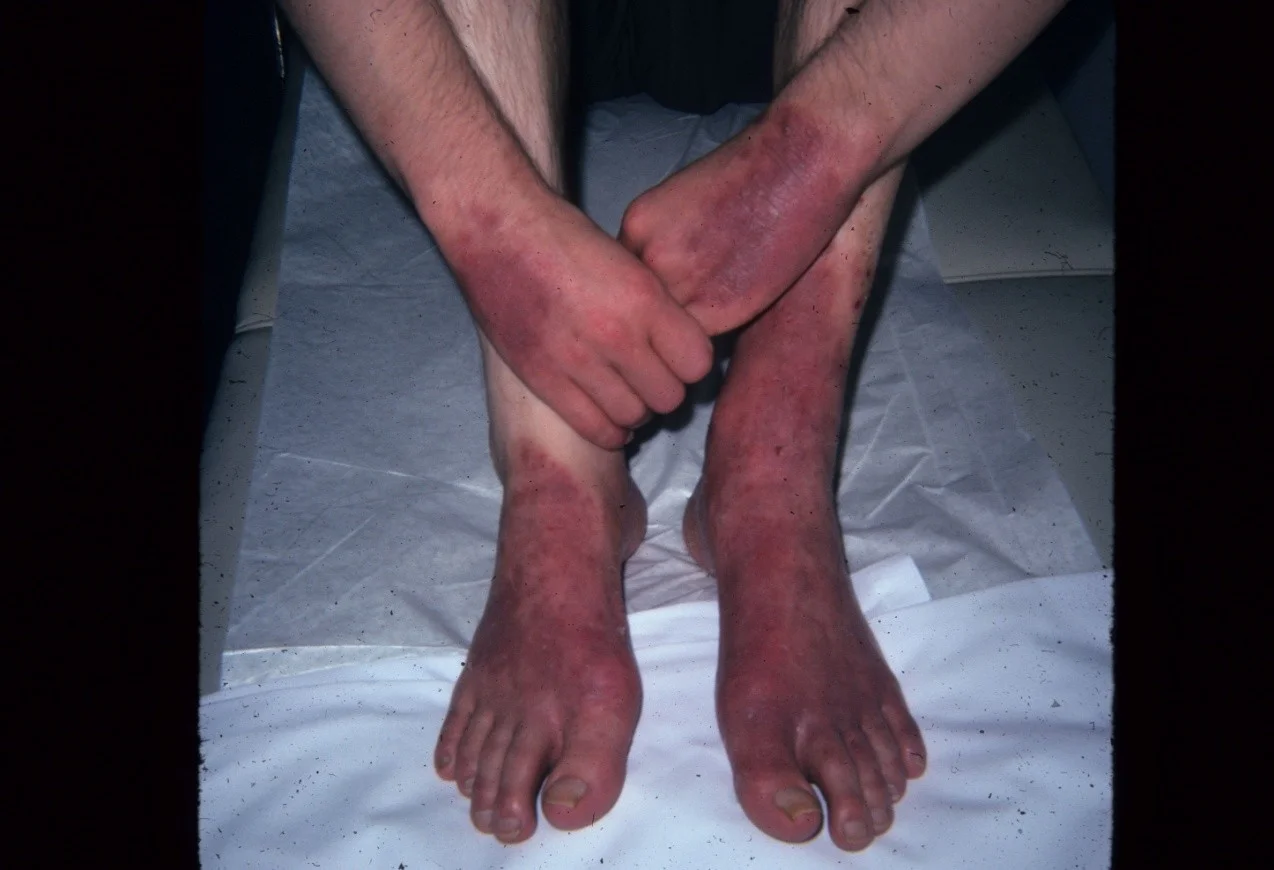History
- HPI: Lyla is a 25-year-old nurse who presents to the dermatology clinic with two months of red, chapped, painful hands. She has been washing her hands much more than usual since she transferred to the intensive care unit. No one else at work is experiencing similar symptoms.
- PMH: asthma as a child, intermittent hay fever
Dry, fissured palms and fingers

Based on her history and exam findings, the most likely diagnosis is irritant contact dermatitis(ICD).
- ICD is an inflammatory reaction in the skin resulting from exposure to a substance that can cause an eruption in most people who come in contact with it
Irritant Contact Dermatitis
- No previous exposure is necessary
- May occur from a single application with severely toxic substances. however
- Most commonly results from repeated application from mildly irritating substances (soaps, detergents)
ICD: Clinical Findings
- Mild irritants produce erythema, chapped skin, dryness and fissuring after repeated exposures over time
- Pruritus can range from mild to extreme
- Pain is a common symptom when erosions and fissures are present
- Severe cases present with edema, exudate, and tenderness
- Potent irritants produce painful bullae within hours after the exposure
More Examples of ICD
Accidental Exposure to Pepper Spray

Exposure to Liquid Bleach

ICD Evaluation and Treatment
- Identification and avoidance of the potential irritant is the mainstay of treatment
- Topical therapy with steroids to reduce inflammation and emollients to improve barrier repair are usually recommended
- Patch testing should be performed in occupational cases with chronic irritant dermatitis to exclude an allergic contact dermatitis